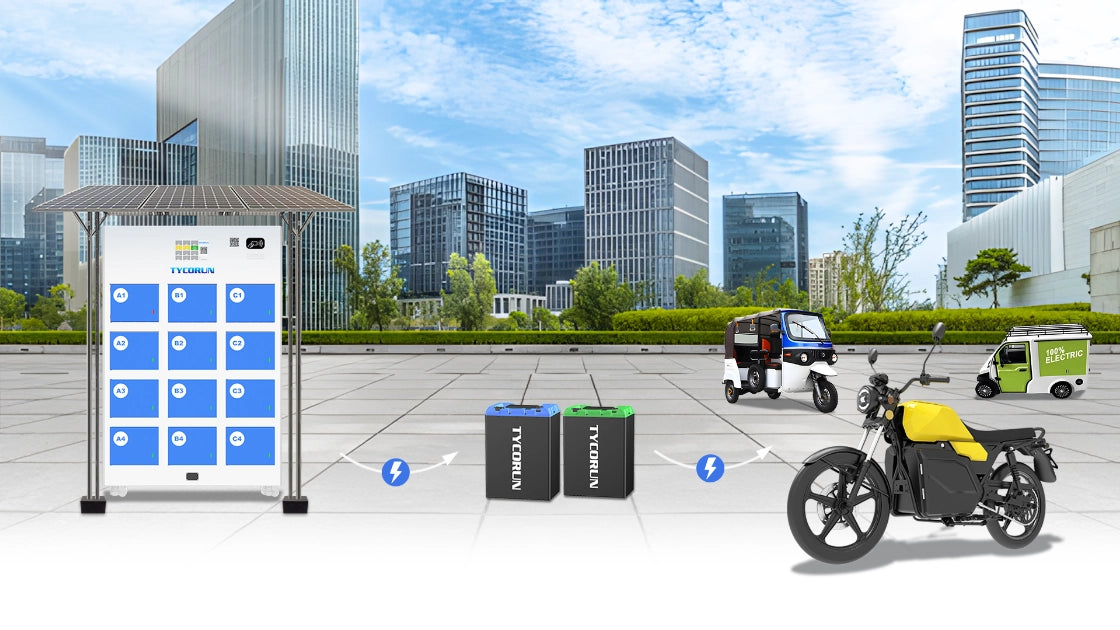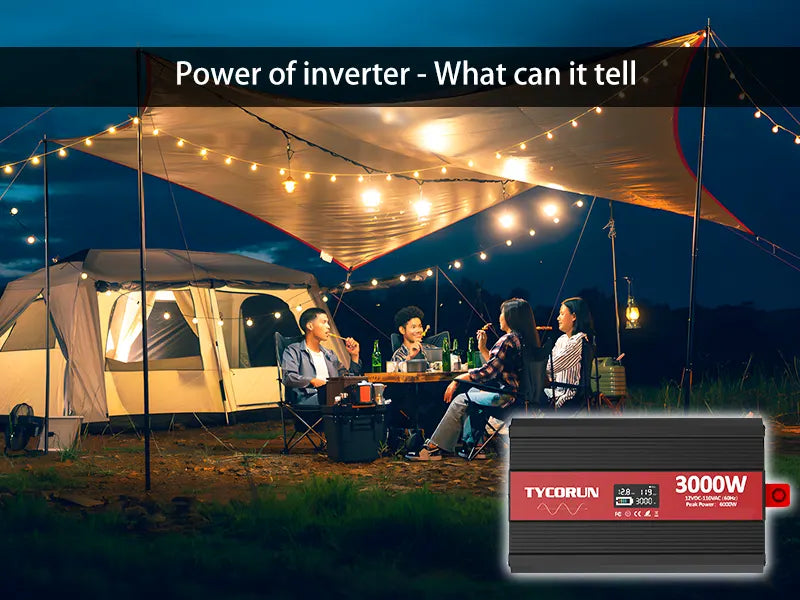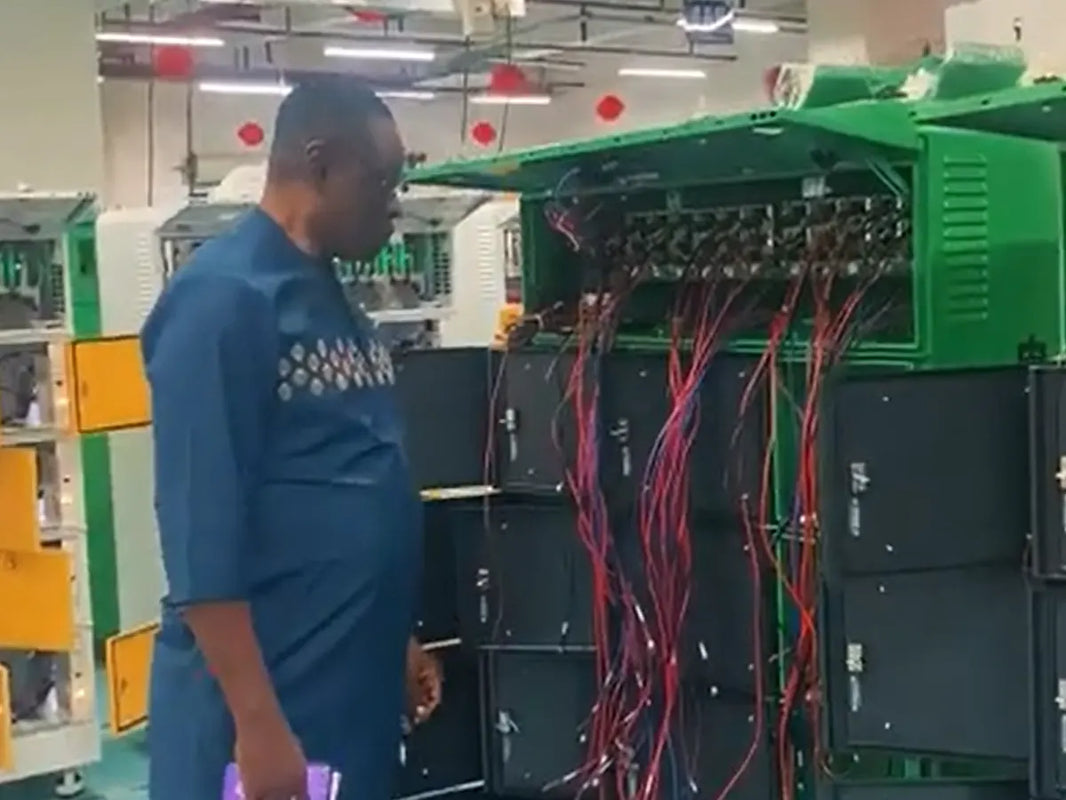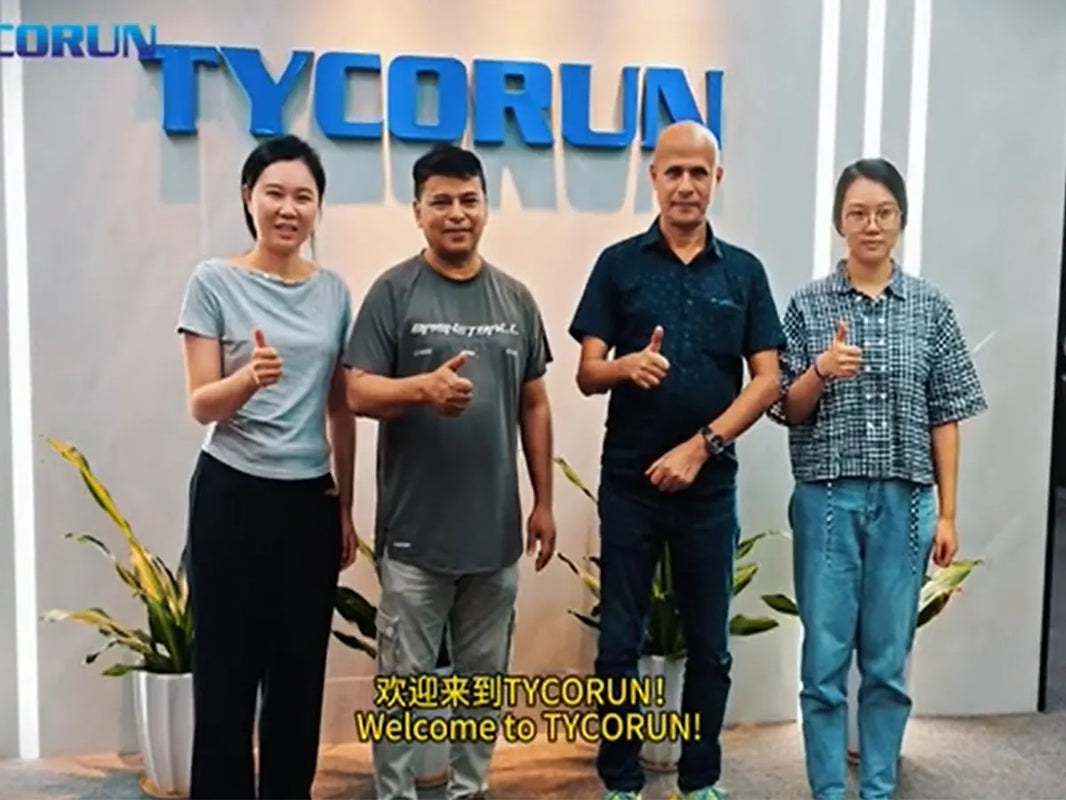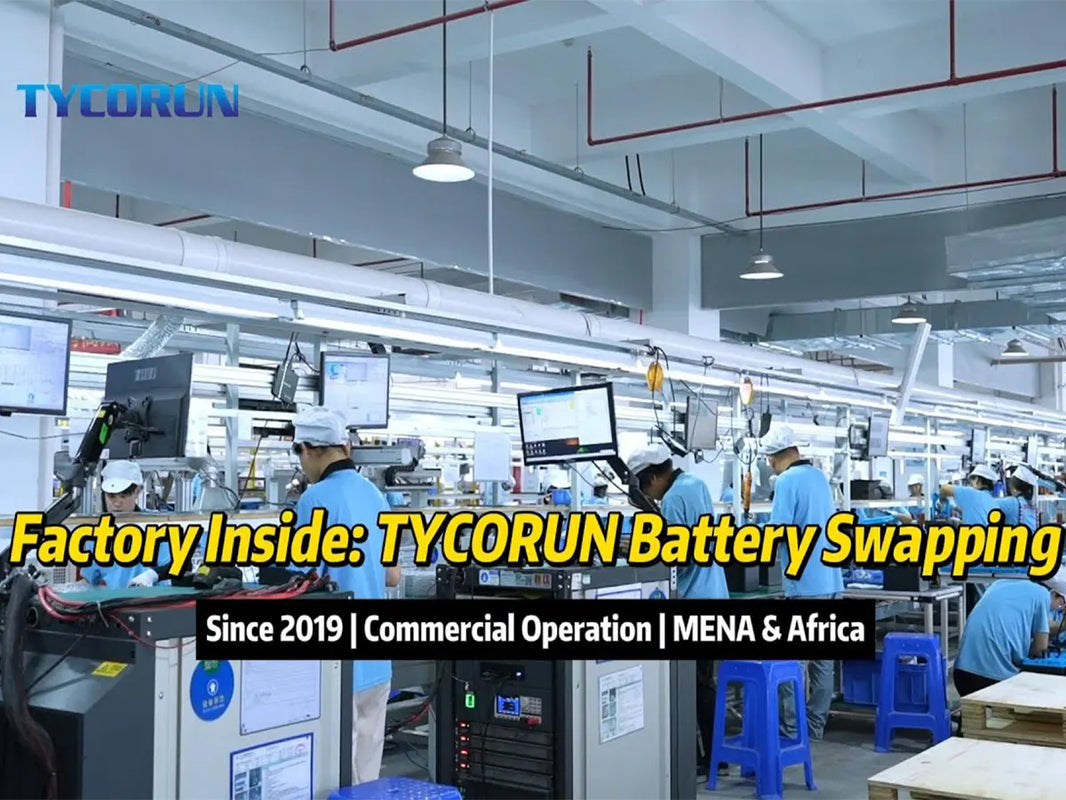
Main content:
Photovoltaics, as a renewable energy source, play an immeasurable role in our lives. It is pollution-free, noiseless, and radiation free. As long as the sun rises every day, it will bring us a continuous stream of electricity. Many people hope to install one on their own roofs to enjoy green energy and good benefits!
As photovoltaic systems enter millions of households, this article will talk about the very important component of photovoltaic systems - the inverter, and interpret the information in the power of inverter from the perspective of users.
Definition of power of inverter
Power of inverter refers to the maximum power that the inverter can continuously and stably output under normal conditions. In addition, there is peak power of inverter in the technical parameters of the inverter, which refers to the maximum power that the inverter can output in a short period of time under specific conditions, also known as instantaneous power.
As for the common size of inverter for solar power, you can check the details in this article.

Types of power inverters
The mains power we use, namely AC power, undergoes periodic changes in size and direction over time, thus requiring an inverter to convert DC power into AC power.
Power of inverter can be divided into square wave inverters, sine wave inverters, and step wave inverters according to the output waveform.
The square wave inverter outputs an AC voltage waveform that is square wave. This type of inverter generally has the characteristics of simple circuit structure and few power transistors used, and the power range is usually in the range of tens to hundreds of watts.
The advantage of square wave inverters lies in their low cost and convenient maintenance; However, its disadvantages are also quite obvious, causing certain interference to delicate equipment during operation, limited voltage regulation range, inadequate protection function, and high operating noise. It is mainly used to power electrical equipment such as copiers, printers, and small chargers that use switch power supplies.
The AC voltage waveform output by the sine wave inverter is a sine wave. Its advantages lie in excellent output waveform quality, extremely low distortion, no interference to communication equipment, low operating noise, and complete protection functions.
The disadvantage is that the circuit structure is relatively complex, the maintenance technology threshold is high, and the purchase cost is relatively expensive. But it is relatively popular in the market due to its stable output, efficient operation, and low maintenance costs.
The AC voltage waveform output by the ladder inverter is a ladder wave. Its advantages are manifested in the significant improvement of output waveform compared to square wave, and the output waveform can be approximated as a quasi sine wave. When using the transformerless output mode, the overall efficiency of the machine is quite high.
The disadvantage is that the circuit requires the use of a large number of power switch tubes, and some circuit forms also require multiple sets of DC power inputs, which adds complexity to the grouping and wiring of photovoltaic arrays and the balanced charging operation of batteries. In addition, there is still some high-frequency interference for some devices. This type of inverter is not only suitable for the application scenarios of square wave inverters mentioned above, but can also be used for small loads with low waveform requirements, such as refrigerators, washing machines, etc.
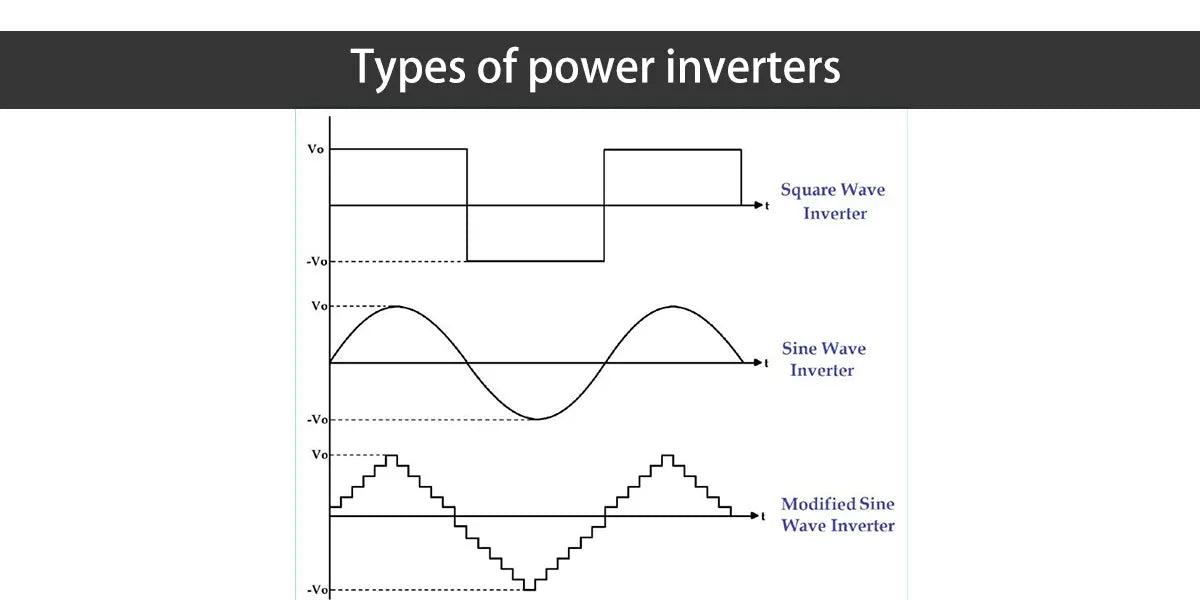
Power of inverter can be divided into micro inverters, string inverters, and centralized inverters according to their application scenarios.
Micro inverters have a power range of 300W~800W and are commonly used outdoors, in RVs, and in small solar systems. Its advantages are single component level control, light weight, simple installation, and stable system. Its disadvantages are high cost, high maintenance cost, and it is currently not suitable for large-scale grid connection.
String inverters have a power range of 3kW~250kW and are used in distributed industrial and commercial applications, as well as on residential rooftops. Its advantages are flexible deployment, high power generation efficiency, and more accurate MPPT tracking, while its disadvantage is more complex system integration.
Central inverters have a power range of 500kW~5MW and are used in large-scale ground centralized power stations. Its advantages are low cost and centralized maintenance, but its disadvantages are also concentrated failure risk and poor flexibility.
The use of power inverter
Photovoltaic inverters not only have the function of direct to alternating current conversion, but also have the function of maximizing the performance of solar cells and system fault protection.
In summary, there are automatic operation and shutdown functions, maximum power tracking control function, anti isolated operation function (for grid connected systems), automatic voltage adjustment function (for grid connected systems), DC detection function (for grid connected systems), DC grounding detection function (for grid connected systems), etc.
These protective measures are aimed at maintaining the safe use and efficient operation of solar photovoltaic systems.
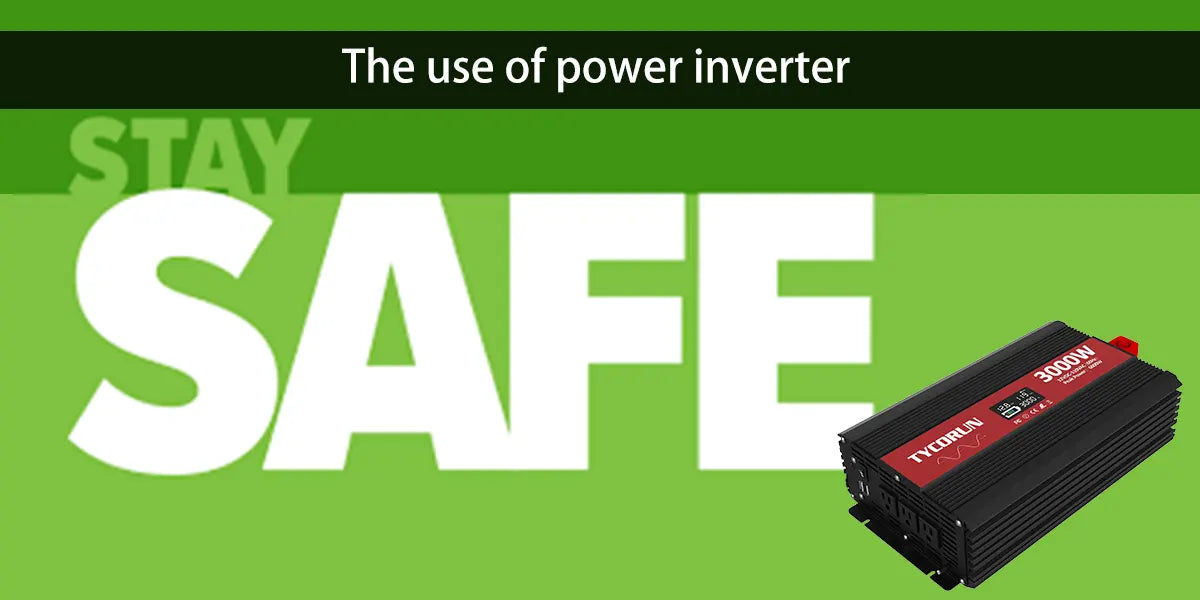
What is the average power of an inverter
The average power of inverter is the average output power of the inverter over a certain period of time, which reflects the efficiency of the photovoltaic system and measures the system's power generation capacity over a certain period of time.
The micro inverter is mainly used for home photovoltaic energy storage, with a power generally ranging from 300W to 800W. Due to its independent MPPT tracking control of each component, the power generation efficiency is relatively high, and the average power may reach about 70% to 90% of the rated power.
String inverters are suitable for industrial and commercial distributed photovoltaic power plants and household rooftop photovoltaic systems, with a power range generally from 3kW to 250kW. In distributed photovoltaic systems, due to factors such as component orientation and shielding, the average power of string inverters may fluctuate between 60% and 80% of the rated power.
Centralized inverters are commonly used in large ground-based photovoltaic power plants, with a power typically ranging from 500kW to 5MW. In areas with good lighting conditions, the average power may reach around 80% to 90% of the rated power; In areas with poor lighting conditions, the average power may drop to 60% to 70%.

How big of a power inverter do i need
The core function of an inverter is to convert direct current (DC) into alternating current (AC) for use in household appliances. When choosing an inverter, the main consideration is its rated output power, which is the maximum power it can continuously and stably output. For example, a 2000W inverter refers to an electrical appliance that can continuously drive a total power not exceeding 2000W.
When choosing an inverter, the power of the inverter should be greater than 1.2-1.5 times the total power of the electrical appliance you want to drive, in order to cope with start-up shocks, electrical fluctuations, etc.
If you want to carry dynamic loads (such as refrigerators, motors, etc.), it is recommended to reserve a larger peak capacity.

How many watts is a good inverter
A good inverter should not only have sufficient power, but also be connected to the electrical system.
Power of inverter should ensure that the output current of the battery pack or photovoltaic module does not exceed the maximum input current of the inverter, otherwise it is easy to burn out the inverter.
A pure sine wave inverter with high efficiency and conversion efficiency of over 90% can reduce power loss and extend service life. For example, the Tycorun power of inverter conversion efficiency is over 91% to ensure your electricity needs.
Power of inverter should have a margin. The maximum output current of the battery pack is equal to the short-circuit current of each component multiplied by the number of parallel connections. This value should be less than the maximum input current of the inverter, leaving some safety space to prevent machine burnout and ensure more stable operation.
In other words, the power supply cannot feed too much electricity to the inverter, and the inverter cannot eat electricity beyond its capacity, otherwise it will heat up or even be damaged.
How much will a 2000 watt inverter power
After understanding the basic content related to the power of inverter, let's answer common questions and take a look at specific examples of power of inverter.
Taking a 2000W inverter as an example, it can drive electrical appliances with a total power not exceeding 2000W. Taking the efficiency of Tycorun pure sine wave inverter as an example, the actual output power is: P actual=P nominal power x inverter efficiency=2000 x 0.91=1820W.
To ensure long-term operational safety, it is recommended to control the load power within 80% of the nominal power, i.e. P safety=2000 × 0.8=1600W
Peak load
Electric motor appliances (such as air conditioners and water pumps) generate 2-7 times the impulse current when starting. For example, the starting power of a 1000W air conditioner load may reach 3000-7000W. The peak power of a 2000W inverter (about 4000W) can only support inductive loads with lower starting power. For devices with peak power above 4000W, it is not recommended to use a 2000W inverter to drive them.
Non motor electrical appliances (such as lamps and computers) have no obvious starting current and can be directly accumulated according to their rated power.

Input Current Requirements (based on 2000W output)
The input power of the inverter is determined by the output power and efficiency.
|
Input Voltage |
Input Voltage |
|
12V |
183A |
|
24V |
91A |
|
48V |
46A |
Different loads have different requirements
For the waveform and power output of the inverter, here are recommended load types for your reference.
|
Load type |
Recommended power |
Range pure sine wave |
Required notes |
|
Resistive loads |
1600–1800W |
No |
E.g. electric kettles, rice cookers, heaters |
|
Inductive loads |
Single ≤ 1000W, |
Yes |
E.g., small ACs, fridges, fans (consider peak power) |
|
Electronic devices |
≤1600W |
Yes |
E.g., computers, TVs – sensitive to waveform |
|
Mixed loads |
total ≤1600W, peak ≤4000W |
Yes |
Ensure startup current remains within limits |
Example Load Combinations
Household Scenario
|
Device |
Power (W) |
|
Rice cooker |
1000 |
|
TV |
300 |
|
LED lighting |
200 |
|
Fan |
100 |
|
Total Power |
1600W |
Outdoor Scenario
|
Device |
Power (W) |
|
Electric drill |
800 |
|
Electric Saw |
700 |
|
LED work light |
100 |
|
Total Power |
1600W |
Not recommended loads such as large water pumps, air compressors, 2000W air conditioners. These devices often have startup power exceeding 4000W and are not suitable for 2000W inverters.
Best brand of power inverter
Tycorun pure sine wave inverters has a full range of power for you to choose,from small size to large capacity like 3000W pure sine wave inverter. High quality raw materials applied in Tycorun power inverter ensures the stable and continuous, and self-developed soft ware and hard ware inside the inverters provides a full and professional after-sales service.
So if you choose Tycorun inverters, we can help you get a greener and more convenient life for electricity in daily life.

Related articles: Top 10 solar inverter manufacturers in 2025, Top 10 solar inverter companies in Spain, Top 8 solar inverter brands in South Africa

